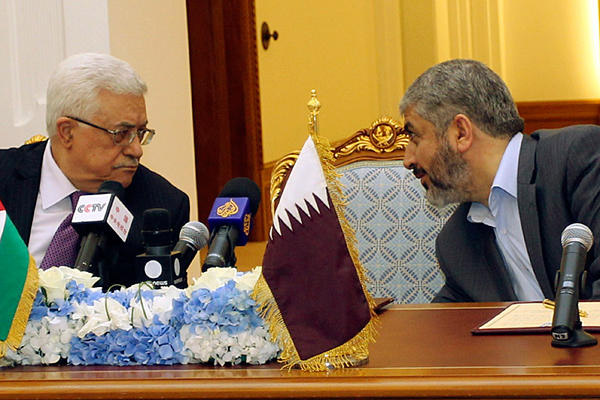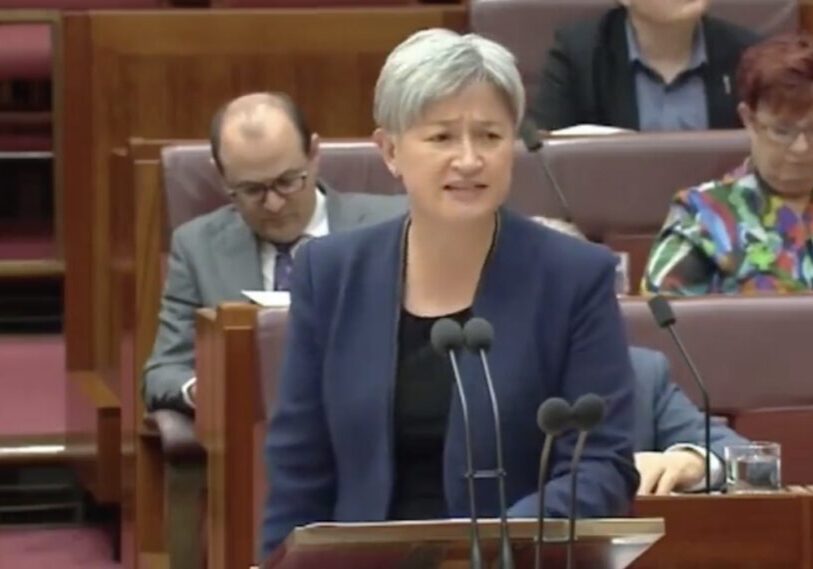Australia/Israel Review
Trojan Horse or Force Multiplier?
Feb 28, 2012 | Jonathan D. Halevi

The New PA-Hamas Agreement
Jonathan D. Halevi
On February 6, 2012, Palestinian Authority (PA) Chairman Mahmoud Abbas and Hamas leader Khaled Meshaal signed a new agreement to create a Palestinian national unity government for the West Bank and Gaza. The agreement, known as the Doha Declaration – under the patronage of the Emir of Qatar, Hamad bin Khalifa al Thani – includes the following provisions:
- The continued functioning of the Palestine Liberation Organisation (PLO) via the reformation of the Palestinian National Council, together with elections to the presidency and the parliament.
- The holding of a second meeting of the ad-hoc committee on revitalising the PLO in Cairo on February 18.
- The creation of a national unity government of technocrats headed by “the president” (Abbas), whose task will be to implement the elections for the presidency and the parliament and to begin the rehabilitation of Gaza.
- To continue the activity of the committees set up by the reconciliation document signed by the two sides in Cairo in December, namely: the Public Freedom Committee, which is authorised to deal with the release of prisoners, the opening of institutions (including Hamas charitable societies) that were closed during the period of hostility between the sides, the return of Fatah activists to Gaza, the issuance of passports, and freedom of action; and the Community Reconciliation Committee, which is to deal with compensating the families of those killed in the violent clashes between Fatah and Hamas.
As background to the signing of the agreement, Abbas announced as a confidence-building measure the release of 64 prisoners from PA prisons in the West Bank. Although the identities of the released prisoners have not been made clear, probably most of them belong to Hamas, given its strong demand to free all the “political prisoners” as an essential condition for reconciliation between the sides.
The agreement makes Abbas the supreme authority for all PA institutions. In addition to heading Fatah, Abbas serves as leader of the PLO, chairman of the PA, and soon as Palestinian prime minister as well. Although appointing “the president” as prime minister contravenes Palestinian basic law, it served as a compromise to overcome Fatah-Hamas disagreement on this issue.
Although the words sound weighty, their practical significance is small since the Doha Declaration, similar to the Cairo reconciliation agreement that preceded it, does not express genuine Hamas recognition of Abbas’ leadership or his authority as leader of the Palestinian people. Instead, it is merely verbal, expedient recognition for tactical reasons, intended to enable Hamas’ official entry into the PLO in the framework of new elections for the Palestinian National Council and to pave the way for presidential and parliamentary elections.
The Hamas leaders are trying to implement the strategy of the Arab Spring in the Palestinian arena. They assume they will win an overwhelming majority in the elections to the representative Palestinian institutions and, thereby, complete their historic takeover of the Palestinian national movement. In other words, they view Abbas as the doorman who opens the gates to the Trojan horse.
Hamas sees no political significance in the envisaged Abbas-headed transition government. This is evident from the fact that its powers are limited to carrying out the presidential and parliamentary elections and working to rehabilitate Gaza. From Abbas’ perspective, his appointment as prime minister, in addition to president, will enable him to maintain the international recognition of the Palestinian government despite the agreement with Hamas, and give him room to manoeuvre in contacts with the international community, both politically and in terms of keeping the aid money flowing.
The Doha Declaration, like previous Fatah-Hamas agreements, emphasises the need to implement the agreements between the sides – once again demonstrating the difficulty of achieving institutional unity in the Palestinian arena in light of Hamas’ declared ambition to assume senior status in representing the Palestinian people. The two sides will have to show great creativity to overcome the many obstacles facing the holding of elections, from unifying the separate civilian and security institutions in the West Bank and Gaza, to budget allocations.
Both sides have a basic interest in joining forces. Hamas, as noted, sees the move as an opportunity to attain seniority and rebuild its infrastructure in the West Bank. Fatah is drawn into the reconciliation by force of circumstances and awareness of the lessons and implications of the Arab Spring, which has led to the loss of its Egyptian support and the rise in power of the Muslim Brotherhood, the parent-movement of Hamas. It appears that the Fatah leaders prefer swimming with the current to sinking beneath it. Abbas thereby buys himself some quiet for an interim period. When it ends, though, he will likely find himself without assets and in a minority in the representative institutions of the Palestinian national movement.
Abbas’ cooperation with Meshaal, and his uncompromising refusal to meet with Israeli Prime Minister Benjamin Netanyahu, illustrates the strategic choice he has made. He does not prefer the path of a political settlement but, rather, to link up with Hamas and the other regional forces emerging in the Arab Spring and thereby use them as a force multiplier against Israel without having to offer political concessions. The release of the 64 prisoners is not only a gesture to Hamas but also an implicit message that the security cooperation with Israel is secondary in Abbas’ eyes to the old-new alliance with Hamas.
Lt. Col. (ret.) Jonathan D. Halevi is a senior researcher of the Middle East and radical Islam at the Jerusalem Centre for Public Affairs. He is a former adviser to the Policy Planning Division of the Israeli Ministry of Foreign Affairs. © Jerusalem Centre for Public Affairs, reprinted by permission, all rights reserved.
Tags: Israel






